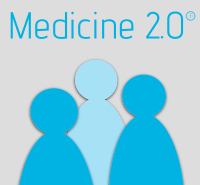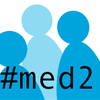Engaging Younger Employee and Family Assistance Programs Users - Examining Access Patterns and User Demographics of Online Service Offerings
|
If you are the presenter of this abstract (or if you cite this abstract in a talk or on a poster), please show the QR code in your slide or poster (QR code contains this URL). |
Abstract
Background
Shepell·fgi is a provider of integrated health and productivity solutions to global and domestic clients who are eligible for Employee and Family Assistance Programs (EFAP). As access to technologically-mediated information and services under the umbrella of mental and physical health is becoming more prevalent via the internet, and consequently more attractive to younger generations accustomed to the immediacy of internet/mobile platforms, the opportunity exists to connect with a younger demographic of EFAP users on a level beyond what was possible through traditional methods of service delivery. Over the last twelve years e-counselling has become a staple clinical intervention, and the last 18 months have seen the rapid expansion of our online access options: the MyEAP app was introduced in May 2011 and updated twice in 2012; First Chat was launched in September 2012 and was added to the MyEAP app in November 2012; and a variety of online user-directed programs have been released. Have these new programs and systems altered the access patterns and user demographics of those seeking EFAP services?
Objective
This report examines the acceptance of Shepell·fgi’s online/digital EFAP services amongst a younger age demographic, and the overall impact and opportunities afforded to us through digital and online innovation to further engage employees and their families. Historically, the largest proportion of clients accessing EFAP services have been in the 30-49 year old age group, far more than those in younger or older demographics. Given that the younger generations are incredibly tech savvy and more heavily reliant on and comfortable with online vs. in-person or even telephonic means of interaction, we would expect to see online EFAP offerings attracting a higher volume of this demographic of user than we have historically seen. We had also hoped that these new options for accessing services would translate into an increase in the number of men accessing services, as historically women have comprised the greater proportion of EFAP clients.
Methods
For this study, Shepell·fgi examined the demographic data collected during the client registration process for 199,926 cases generated for EFAP counselling and online programs from January 1, 2012 to December 31, 2012. The 2012 demographic profile of individuals accessing our EFAPs counselling channels was later compared to the data from 2010 and 2011.
Results
Analysis of the data demonstrates that clients aged 20-39 represent the greatest proportion of those accessing to request clinical support via digital services. Consistent with offline or traditional services, women continue to access online services more than do men.
Conclusions
The results of this paper make it clear that we are engaging a younger group of EFAP users, a demographic that historically has been difficult to service. It is clear to us that we have much to gain from investing in and advancing the development of internet- and mobile-based services in order to connect with, provide service to, and successfully retain the emerging younger client demographic. As our mandate is to provide the best possible services to support the needs of our clients we are committed to continuing along this path.
Shepell·fgi is a provider of integrated health and productivity solutions to global and domestic clients who are eligible for Employee and Family Assistance Programs (EFAP). As access to technologically-mediated information and services under the umbrella of mental and physical health is becoming more prevalent via the internet, and consequently more attractive to younger generations accustomed to the immediacy of internet/mobile platforms, the opportunity exists to connect with a younger demographic of EFAP users on a level beyond what was possible through traditional methods of service delivery. Over the last twelve years e-counselling has become a staple clinical intervention, and the last 18 months have seen the rapid expansion of our online access options: the MyEAP app was introduced in May 2011 and updated twice in 2012; First Chat was launched in September 2012 and was added to the MyEAP app in November 2012; and a variety of online user-directed programs have been released. Have these new programs and systems altered the access patterns and user demographics of those seeking EFAP services?
Objective
This report examines the acceptance of Shepell·fgi’s online/digital EFAP services amongst a younger age demographic, and the overall impact and opportunities afforded to us through digital and online innovation to further engage employees and their families. Historically, the largest proportion of clients accessing EFAP services have been in the 30-49 year old age group, far more than those in younger or older demographics. Given that the younger generations are incredibly tech savvy and more heavily reliant on and comfortable with online vs. in-person or even telephonic means of interaction, we would expect to see online EFAP offerings attracting a higher volume of this demographic of user than we have historically seen. We had also hoped that these new options for accessing services would translate into an increase in the number of men accessing services, as historically women have comprised the greater proportion of EFAP clients.
Methods
For this study, Shepell·fgi examined the demographic data collected during the client registration process for 199,926 cases generated for EFAP counselling and online programs from January 1, 2012 to December 31, 2012. The 2012 demographic profile of individuals accessing our EFAPs counselling channels was later compared to the data from 2010 and 2011.
Results
Analysis of the data demonstrates that clients aged 20-39 represent the greatest proportion of those accessing to request clinical support via digital services. Consistent with offline or traditional services, women continue to access online services more than do men.
Conclusions
The results of this paper make it clear that we are engaging a younger group of EFAP users, a demographic that historically has been difficult to service. It is clear to us that we have much to gain from investing in and advancing the development of internet- and mobile-based services in order to connect with, provide service to, and successfully retain the emerging younger client demographic. As our mandate is to provide the best possible services to support the needs of our clients we are committed to continuing along this path.
Medicine 2.0® is happy to support and promote other conferences and workshops in this area. Contact us to produce, disseminate and promote your conference or workshop under this label and in this event series. In addition, we are always looking for hosts of future World Congresses. Medicine 2.0® is a registered trademark of JMIR Publications Inc., the leading academic ehealth publisher.

This work is licensed under a Creative Commons Attribution 3.0 License.




